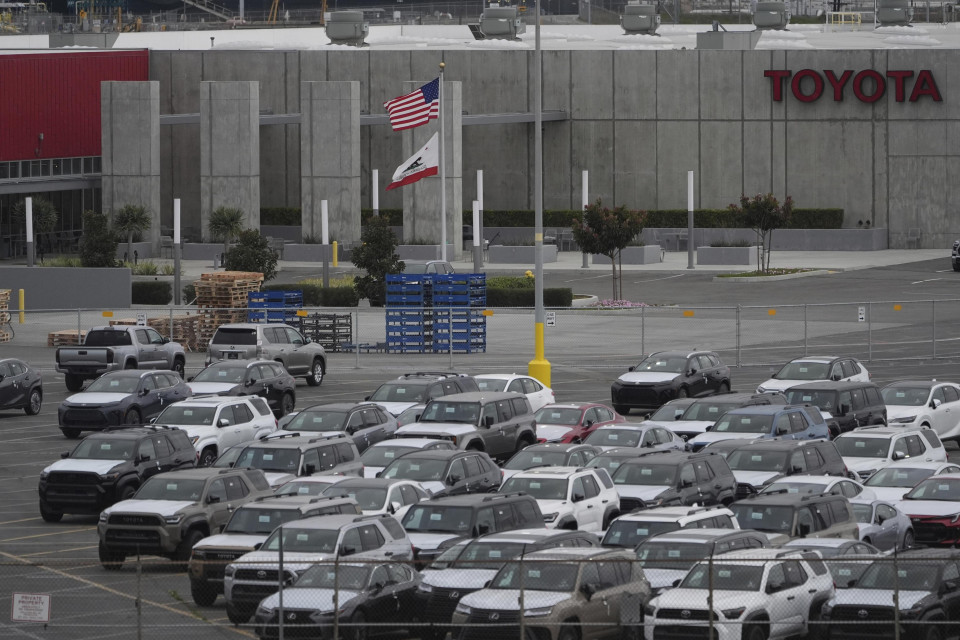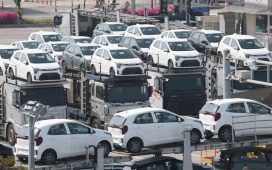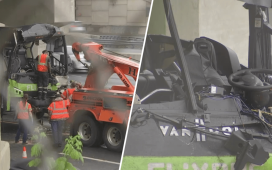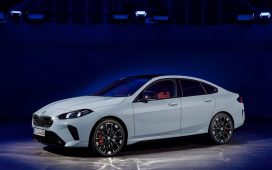The U.S. administration of President Donald Trump on Saturday imposed a new 25 percent tariff on key auto parts such as engines, in another blow to Japan’s mainstay car industry already slapped with the same rate of tariff on automobiles.
However, in a bid to ease the impact of the tariffs on the auto industry, the Trump administration has taken steps to help manufacturers relocate supply chains for car parts used in the United States over the next two years.
The new 25 percent duties on imported passenger vehicles and light trucks took effect on April 3 targeting all countries around the world.

New Toyota vehicles are stored at a facility in Long Beach, California, on March 26, 2025. (AP/Kyodo)
Trump’s car tariffs could have a particularly huge impact on Japan, a key U.S. ally, as the auto industry has been a major driver of the broader economy.
Last year, Japan shipped around 6 trillion yen ($41 billion) worth of vehicles to the United States. Together with auto part exports, they accounted for one-third of Japan’s total exports to the world’s largest economy, according to Japanese trade data.
Since returning to the White House in January, Trump has introduced or announced various duties in a bid to reduce U.S. trade deficits and address what he views as unfair trade practices, such as a 25 percent levy on all steel and aluminum imports and so-called reciprocal tariff targeting goods from dozens of trading partners.
When announcing in late March the tariffs on imports of automobiles and certain automobile parts, including transmissions and electrical components, Trump said it was to protect America’s automobile industry, which has been “undermined by excessive imports threatening America’s domestic industrial base and supply chains.”
But automakers have argued that due to the complexity of their supply chains, it will take time to procure domestically all of the parts necessary to manufacture vehicles in the United States.
Under the relief measures, a carmaker is allowed to offset the tariffs for 15 percent of the suggested retail price of an automobile assembled in the United States during the first year of the tariffs and 10 percent in the second year.
Accordingly, automakers are able to apply for a reimbursement of up to 3.75 percent of the value of each U.S.-made vehicle in the first year and 2.5 percent in the second year, before the offset arrangement stops.
Related coverage:
Japanese carmakers post firm U.S. sales growth on rush of buying
Japan, U.S. agree to step up tariff talks with June deal in mind
Trump eases impact of auto tariffs on 100th day in office






